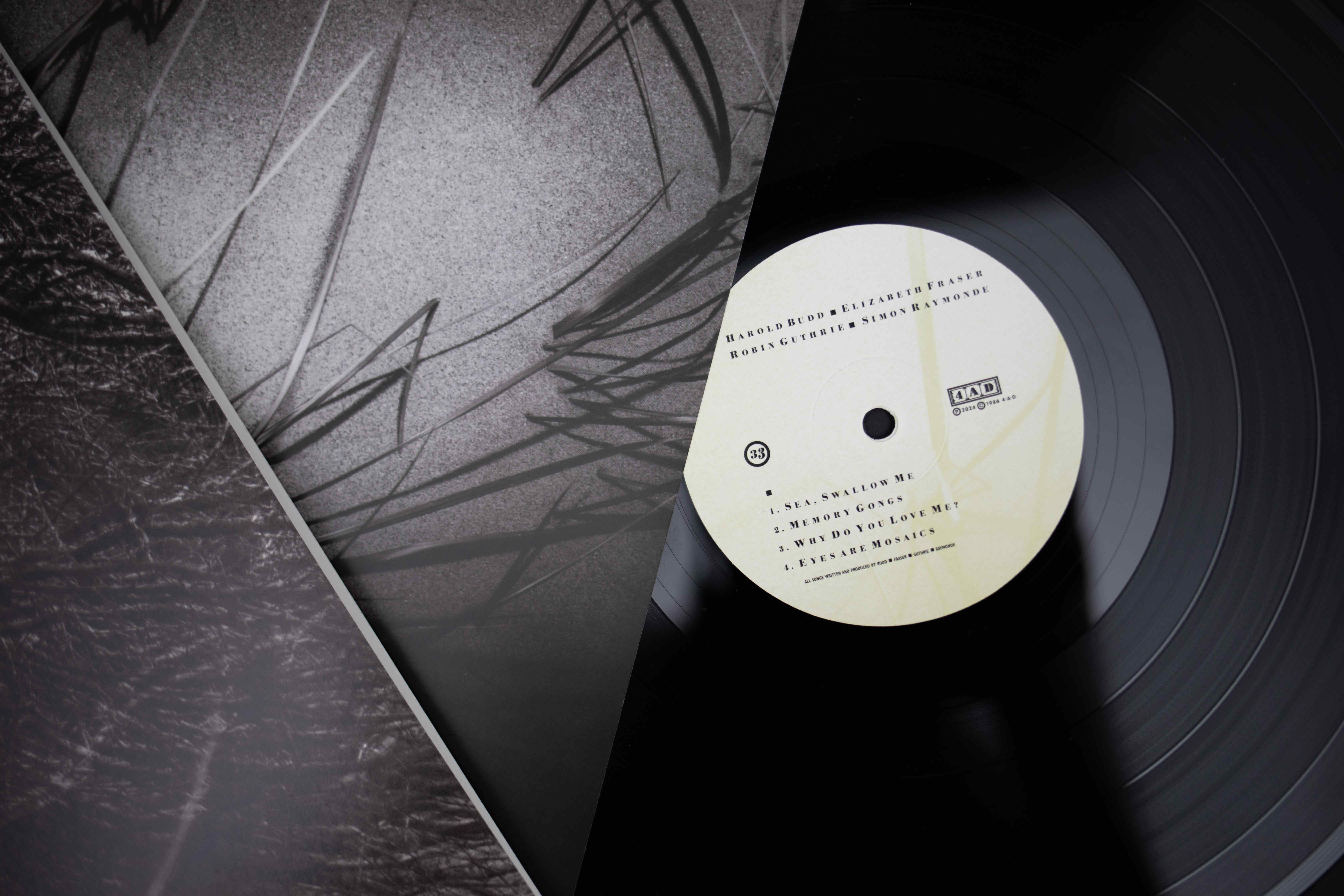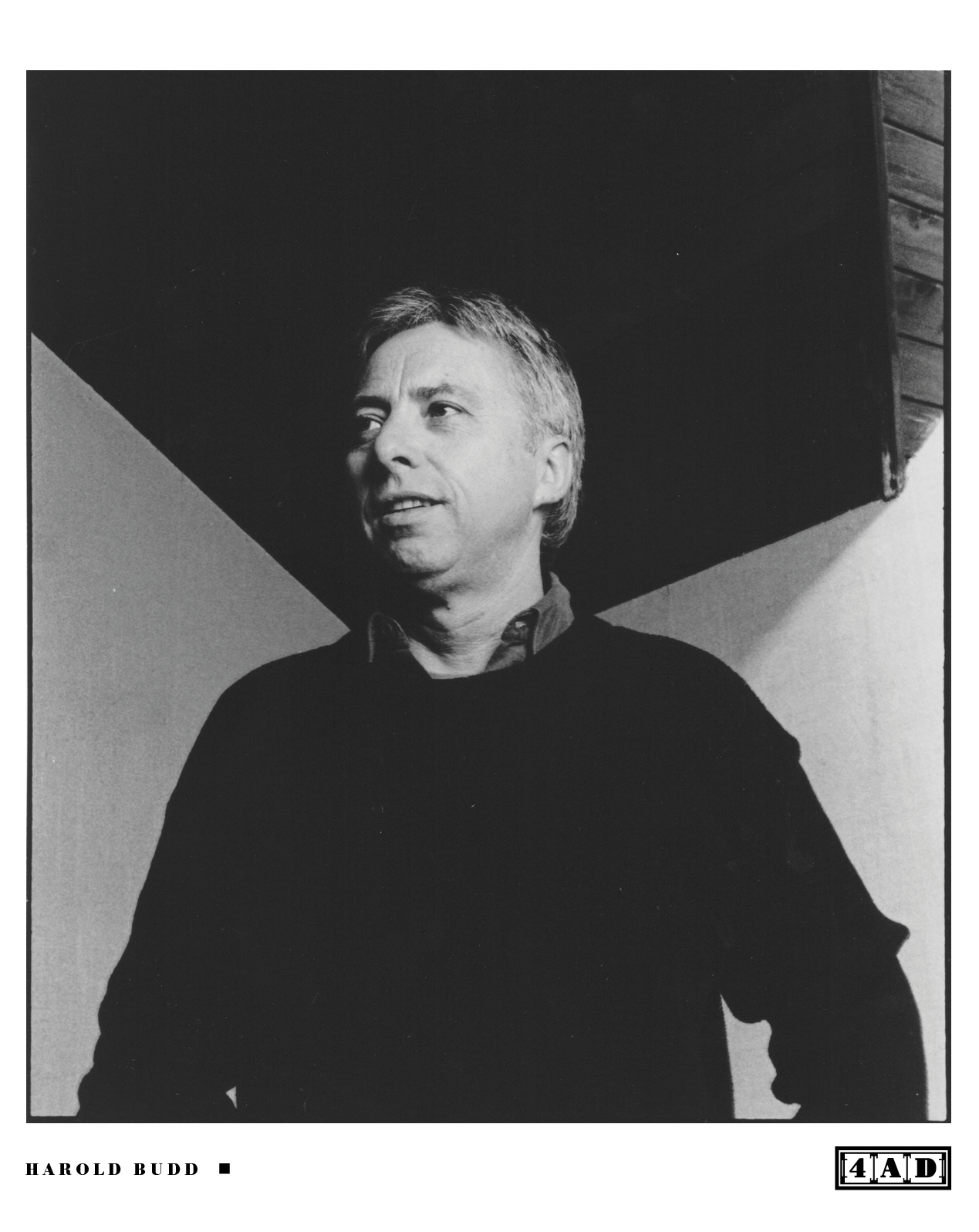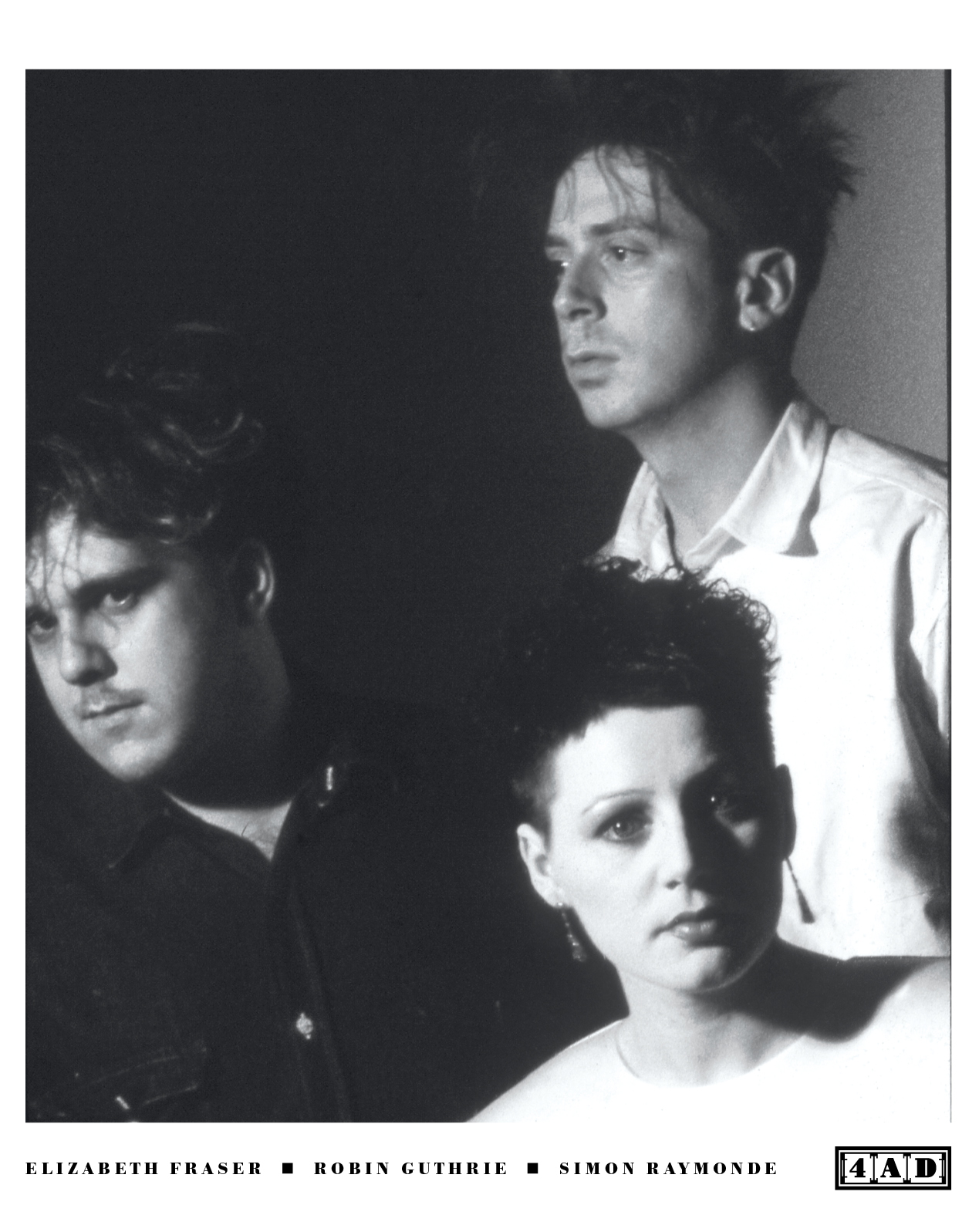- Adrianne Lenker
- Aldous Harding
- Anjimile
- Atlas Sound
- Bartees Strange
- Becky and the Birds
- Big Thief
- Buck Meek
- cumgirl8
- Daughter
- Deerhunter
- Dry Cleaning
- Erika de Casier
- Ex:Re
- Future Islands
- Helado Negro
- Holly Herndon
- Jenny Hval
- Kim Deal
- Lucinda Chua
- Maria Somerville
- Scott Walker
- The Breeders
- The National
- Tkay Maidza
- Tucker Zimmerman
- Tune-Yards
- U.S. Girls
- All Artists
The Moon and the Melodies is a singular record within the Cocteau Twins’ catalogue—unusually ethereal, even by their standards, and largely instrumental, guided by the free-form improvisations of Harold Budd, an ambient pioneer who had drifted into their orbit as if by divine intervention. Building on the atmospheric bliss of Victorialand, released earlier the same year, it signaled a possible future for the trio, yet it was a path the Cocteau Twins would never take again. Now, 38 years after it was first released, it has been reissued for the first time—remastered, from the original tapes, by Robin Guthrie himself.
The album was never actually meant to happen; no one can even recall exactly how it came about in the first place. As both Guthrie and Simon Raymonde remember it, the independent television station Channel 4 approached 4AD about a film project pairing musicians from different genres. In interviews in the 1980s, however, Budd, who passed away in 2020, believed that his music publisher had linked him with the Cocteaus after the group had expressed interest in covering one of his songs. In any case, the film never happened. “But we’d spoken to Harold, and we were all quite excited about it—in a very sort of downbeat Cocteau Twins way, where we were rarely excited about anything,” Raymonde recalls. “We’re like, well, let’s carry on and do it anyway—you’ve already booked your flight, let’s just hang out in the studio and see what happens.”
“There was a lot of hilarity,” Guthrie says. “It was strange to have an older man in our life, because Liz and I saw everybody around us—the contemporary bands, the people running record labels, the journalists—as grownups. We were literally kids. I thought, ‘Oh Christ, he’s going to be some pompous, you know, into his classical music,’ and he wasn’t. He was just a big man-child. We clicked in that respect.”
 The Cocteau Twins had recently built their own recording studio in North Acton, in West London. It was the first time they’d had their own space, and they relished their newfound freedom. “We were in this lovely little bubble of making our own music,” Raymonde says. Budd fit right into their bubble world; all four musicians got on immediately. Over pints at the pub, they talked about everything but music, and in the studio, Raymonde and Budd both say that very little, if anything, was discussed, save perhaps for questions of tempo or key.
The Cocteau Twins had recently built their own recording studio in North Acton, in West London. It was the first time they’d had their own space, and they relished their newfound freedom. “We were in this lovely little bubble of making our own music,” Raymonde says. Budd fit right into their bubble world; all four musicians got on immediately. Over pints at the pub, they talked about everything but music, and in the studio, Raymonde and Budd both say that very little, if anything, was discussed, save perhaps for questions of tempo or key.
“Harold would sit down at the piano and start playing something, and then maybe I’d pick up a bass and start playing along with him,” Raymonde says. “They were very much noodles rather than songs. That was the way we tended to work anyway. Work out what kind of mood are we feeling, get a drum beat going, just a two-bar pattern; Guthrie would plug his guitar in, I would plug my bass in, and then we’d just jam for a few minutes and go, ‘Yeah, that was cool, let’s carry on doing that thing or that thing,’ really casually, and then all of a sudden we’d have a song. I know that sounds ludicrous, but that is how we did it, and with Harold it was exactly the same.”
Budd played a Yamaha CP-70 electric grand, and the group came armed with a growing arsenal of gear, like the Yamaha Rev7 multi-effects processor and Lexicon PCM60, perhaps an Ensoniq Mirage. Guthrie used an EBow on his guitars, along with a Gizmo, an electromechanical device invented by Godley and Creme. Guthrie remembers endless experiments in search of new sounds: “Lots of messing around, tuning the guitar strings all the same, getting droney sorts of things—really big, loud, sort of Metallica-like feedback sounds, but then put in the mix so quietly you can hardly hear them the first time you listen. All these psychoacoustic sort of tricks that I liked. It’s all in there, you know. Just being fearless—if it didn’t work out, it was never going to be a record anyway.”


The musicians’ contrasting approaches ended up shaping the album’s somewhat curious format—four instrumentals in Budd’s meandering style, more tone poems than actual songs, and four more structured pieces with verses, choruses, drum machine, and, of course, Elizabeth Fraser’s inimitable singing, as bold and inspired as anywhere in the band’s catalogue. There was no conscious decision to have Fraser only sing on four songs. “That’s just what came out of the sessions,” Guthrie says. “It was a lightweight atmosphere making it, because we didn’t actually feel that we were making a record at the time. We were trying out some stuff in the studio, and it just evolved into what it did. Which is, essentially, a recorded version of some people trying out some stuff in the studio.”
The sessions were over in two weeks, maybe three. “And that was already getting a bit long,” Guthrie says, “because some of our earlier records had taken just a couple of days.” They fleshed out the material, he adds, with one more song that the trio wrote in Budd’s absence, after they realized they didn’t have quite enough material for a full album. (“Was I that drunk?” Budd asked, upon hearing the final version of the album, which included a song he had no recollection of making.) As much as it may pain fans to hear it, there is no more extant material from the sessions—no outtakes, no rough drafts, no alternate versions. “For the 13 years I was in the band, we have no spare tracks at all,” Raymonde says. “If after an hour or two a track wasn’t coming together, we’d just get rid of it. If it wasn’t good now, our attitude was, it’ll never be any good. So we’d think, tomorrow’s another day—let’s go to the cinema and come back tomorrow, and see how it goes. Let’s go bowling.”
The other curious thing about the album—the fact that it was credited to all four players under their individual names—followed the same intuitive logic as everything else that went into the record. “It’s because it wasn’t a Cocteau Twins album,” Guthrie says. Raymonde concurs: “It was simple. All four of us have gone into the studio and done something, but it isn’t a Cocteau Twins album.” But perhaps the passage of time has changed matters. These days, on streaming services, you’ll find the album filed chronologically alongside the rest of the band’s work. “What’s interesting,” Guthrie adds, “is that I got the tape boxes from the studio, and guess what it says on it? ‘Cocteau Twins plus Harold Budd.’” Perhaps, he seems to suggest, the group got hung up on a detail that never really mattered. In any case, Raymonde says, “The more credit that Harold gets for the work he did, the more people that find his music because it’s in the Cocteau environment, the better.”
Despite all its quirks, The Moon and the Melodies has attracted a passionate fan base over the years. Its most atmospheric tracks routinely turn up in ambient DJ sets. “Sea, Swallow Me” is one of the Cocteau Twins’ most streamed songs on Spotify, second only to Heaven or Las Vegas’ “Cherry-coloured Funk”; it has also found new life on TikTok, where it serves as the soundtrack to innumerable expressions of hard-to-express melancholy. For such a low-key affair, the album casts a long shadow—but Raymonde believes the record’s uniqueness stems directly from its humble, unpremeditated origins. “It’s always about making something that’s pleasurable,” he says, “capturing a moment in time between friends that are enjoying making music together. Really, that’s the essence of it—the music was just a reflection of how nice a time we were having in the studio.”
- by Philip Sherburne
Harold Budd ▪ Elizabeth Fraser ▪ Robin Guthrie ▪ Simon Raymonde
The Moon and the Melodies
4AD0642
A1. Sea, Swallow Me
A2. Memory Gongs
A3. Why Do You Love Me?
A4. Eyes are Mosaics
B1. She Will Destroy You
B2. The Ghost Has No Home
B3. Bloody and Blunt
B4. Ooze Out and Away, Onehow
COCTEAU TWINS ONLINE
Spotify
Apple Music
Twitter
Instagram
YouTube



